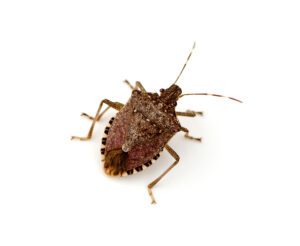
When I’m shopping and I put my groceries on the checkout belt it is usually comprised of fruits and vegetables along with grains. My grocery bill happens to be one of my largest expenses as I try to choose the healthiest options which tend to cost a bit more.
I find choosing the healthiest foods worthwhile due to the health benefits, yet more and more there are times I avoid certain healthier foods due to their cost. Recently I stumbled on how a small bug might be the cause of our produce prices soaring, due to the damage they cause and how scientists are at a loss for a solution.
The United States is home to over 91,000 different insects while the state of Ohio has approximately 635 insects in the insect identification database. Most of these insects are considered native, meaning they are found in an area due to natural processes, compared to invasive, which means they will thrive in the area and negatively affect the native species and are likely to cause environmental or economic health. One such invasive insect is the Brown Marmorated Stink Bug (BMSB).
BMSB were first spotted in the United States in Allentown, Pennsylvania in 1998. BMSB is a product of globalization and native to East Asia, China, Taiwan, Japan, North and South Korea. In less than 20 years they have quickly spread to 44 of the 48 continental US states partially due to their ability to fly long distances. In one study scientists glued 737 BMSB to tiny flight treadmills and tracked how far they flew and were quite astonished, as the average was 1.5 miles a day.
There are many invasive bugs across the world, yet few get the labeling of a pest. The BMSB quickly took that role not because of the smell it excretes when in danger, that some have likened from moldy cilantro to dirty socks, but because of the damage they do. Most herbivore insects are specialists in that they tend to eat only a few things. For example, the emerald ash borer attacks ash trees where the boll weevil goes after cotton, yet the BMSB doesn’t believe in specialization as currently this pest has a list of 250 plants, vegetables, fruits, nuts, and berries that it feeds on. Once a BMSB starts feeding on a product such as a fruit, it usually makes it unsellable.

Upon insertion of their mouth the BMSB will release an aggregation chemical. This chemical has a smell that attracts other BMSB to join the eating. BMSB sucks the juices out of a fruit, which cause the cells of the fruit to darken and get dimples.
It results in scars known as “cat-facing” because of the cat-face-shaped scars left from where they pierced the skin. These scars make the fruit or vegetable unsellable for produce, yet sometimes it can be salvaged to process for juice. Fruit loses as much as 80-90% of value due to degradation. Many times, produce will still be tossed out as the aggregation chemicals that the bugs emit while feeding changes the way the juice tastes.
When it comes to pests, the use of pesticides is often an option; yet for the BMSB, pesticides don’t work well as their long legs keep the pesticide away from their organs and their hard shell provides a protective barrier. Most species in the world have natural predators and the BMSB has none in the US as spiders, birds, reptiles, and other animals and insects don’t like the way they small or taste.
Having few predators has allowed the BMSB to spread quickly, and so has the cost of the damage. In 2010 Pennsylvania apple growers lost almost half of their crop to stink bugs, over $15 million dollars. That same year New Jersey, the fourth largest peach producer in the nation, had losses ranging from 60-90%.
In recent years the BMSB has been spotted in 36 of the 58 California counties. One lab study showed two new foods that the BMSB would eat, avocados and citrus fruits. As scientists struggle to find a solution to slow down the BMSB progress, pesticide use has suddenly jumped due to the BMSB problem. Even though the general population is not scientists or farmers, we can help the battle against these pests.
Instead of tossing them out when they crawl indoors during colder months, we can squish them or flush them down the toilet. Yes, that might sound funny, but it is our fight too. As our produce and farming methods have quickly changed in the last ten years, so can our thoughts about removing a bug. It might only be one or two BMSB that we destroy, but by eliminating one that lays 240 eggs a year, we have done our part.
Stink Bugs: The Fight Against a Pest






